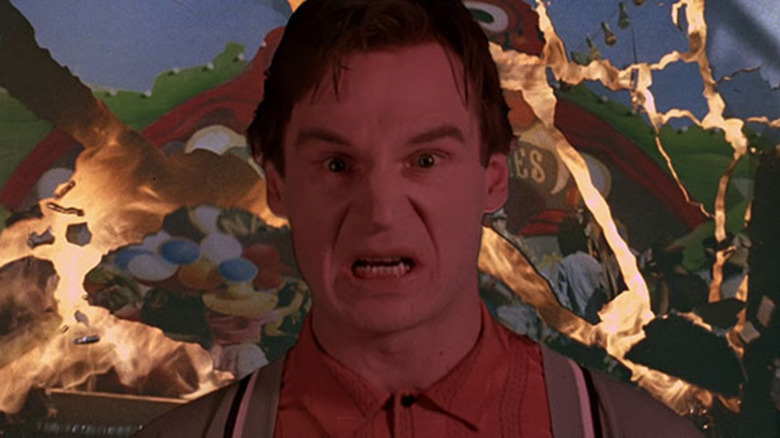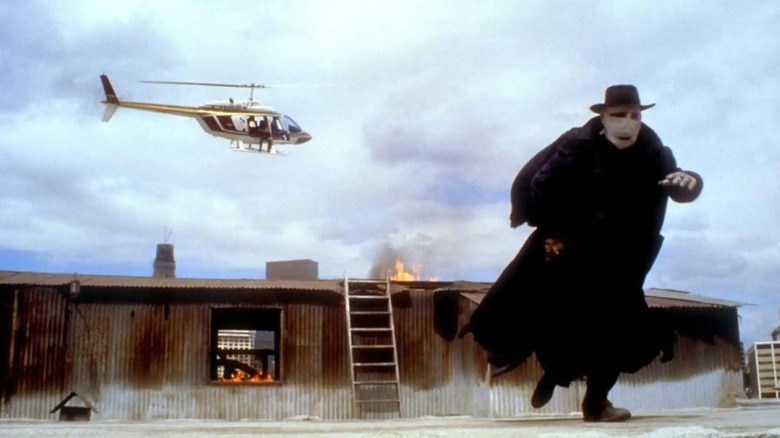Why The Studio Didn't Want Sam Raimi's Darkman To Look Like The Evil Dead
Before truly hitting it big with the "Spider-Man" trilogy, Sam Raimi took his first shot at comic book films with "Darkman." An original and gritty take on classic superhero tropes, it's largely considered one of the director's most underrated films, as well as a precursor to the darker superhero films of the 2010s. However, what makes "Darkman" unique from, say, the work of Zack Snyder, is that it also had that campy and distinctly Raimi style embedded throughout. If you're familiar with the director's work in pretty much any capacity, you'll know that his visual style and how his scenes are shot are part of the movie-watching experience he wants you to have.
Unfortunately, that style doesn't always jive with big studios. One case in point was, believe it or not, "Darkman." In an oral history published by The Hollywood Reporter, cinematographer Bill Pope said that he was hired because Universal Pictures didn't want any of the cinematography from "The Evil Dead" to carry over into the film. He speculated that this was indicative of the studio's approach to the entire project.
"Sam needed a DP because Universal insisted that he not make it look like 'Evil Dead,'" Pope explained. "Standard studio-think at the time [was] ever give a new director exactly what they are comfortable with as a way of controlling them."
I'm everyone and no one
Unfortunately for Universal, you simply can't expect Sam Raimi to direct without his standard visual flare. Instead of being the everyman the studio was likely expecting, Bill Pope achieved some extremely cool shots that looked like more polished versions of the ones in, you probably guessed it, "Evil Dead." However, you shouldn't just take my word for it. Read about what kinds of shots Pope did for yourself:
"We used the eyeball/flyball rig, the Perfalock dance-o-cam, the Perfalock drunken cam, snap zooms, whip pans, Dutch angles, cameras attached to sticks and blankets, and virtually anything that moved. We always moved the camera. I have a distinct memory of being told by our dolly grip on day 50-something that we were doing our first shot in the film where the camera didn't move through space — and it was a 360-degree pan."
So yeah, this was destined to be a Raimi film, no matter what limitations were put on it. It's really such a shame that studio interference has always been an issue with the director's filmography, from "Darkman" to the "Spider-Man" trilogy. He's proven time and time again to be a unique and singular voice, so why have his works almost always had some sort of creative conflict associated with them? As the kids say nowadays, let him cook.

